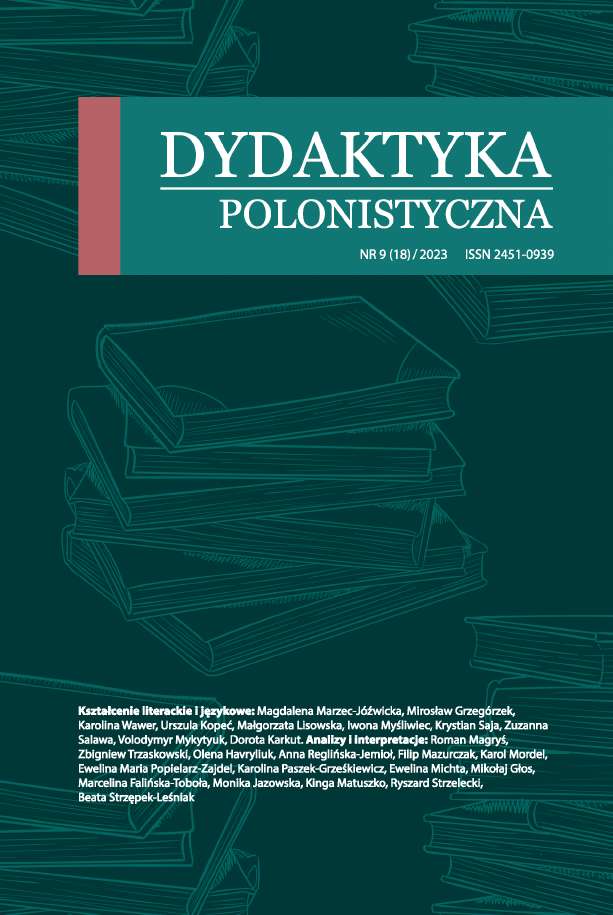„Sztuczna inteligencja” a duchowość człowieka
DOI:
https://doi.org/10.15584/dyd.pol.18.2023.23Słowa kluczowe:
człowiek, komputer, maszyna cyfrowa, sztuczna inteligencja, sieć komputerowa, mózg, umysł, myśl, język, świadomość, intencjonalność, duchowość, mistykaAbstrakt
Artykuł dotyczy wielorakich odniesień między człowiekiem a komputerem. Zasadnicza rola komputera w tych odniesieniach polega na symulowaniu procesów umysłowych człowieka. Zakres symulacji i stopień zbliżenia możliwości maszyn cyfrowych do wielorakich uzdolnień człowieka jest różny – począwszy od analogii rachunkowej aż po zamysły stworzenia komputerowego sobowtóra bliskiego człowiekowi w zakresie podstawowych uzdolnień: intelektualnych, psychicznych, a nawet duchowych. Część owych zamierzeń, dotyczących elementarnych zadań obliczeniowych, została w świecie zrealizowana, część może zostać zrealizowana, są jednak aspiracje, które nigdy nie będą spełnione. Staje się tak zawsze wówczas, gdy od komputera wymaga się symulacji stanów, których nie może on wytworzyć (takich jak: świadomość, intencjonalność czy duchowość). Mimo tej oczywistej prawdy i nie bacząc na narastające trudności, zabiegi takie są podejmowane, a trudności narastają, gdy symulacją obejmuje się coraz głębsze wymiary istoty ludzkiej. W poszczególnych częściach artykułu zostały omówione kolejne etapy „komputacyjnego” zgłębiania wymiarów człowieka, poczynając od najbardziej płytkich, aż po wymiar najgłębszy. Zatem stosunkowo najmniej trudności wyłania się we wzajemnym odnoszeniu człowieka i komputera na płaszczyźnie inteligencji obliczeniowej (część 1); więcej perypetii sprawia symulowanie świadomości (część 2), wyraźne już perturbacje wiążą się z wysiłkami wyposażania komputera w intencjonalność, która w istocie winna być przecież aktowa (część 3); dalej mowa o duchowości i mistyce – o dyspozycjach jeszcze bardziej dla komputera nieosiągalnych (część 4). W usilnych dążeniach do zrównania człowieka z komputerem stosuje się dwojakiego rodzaju strategie. Pierwsza polega na upodrzędnieniu czy wręcz lekceważeniu tych zdolności człowieka, które nie mogą być symulowane (zniżanie człowieka do komputera). Druga – na przedefiniowaniu funkcji komputera celem nadania im charakteru i nazw stosownie do atrybutów człowieka (podnoszenie komputera do miary człowieka). Artykuł poprzedzały liczne wypowiedzi, stanowiska, nadzieje oraz formułowane wobec „sztucznej inteligencji” oczekiwania. Wszelako w tekście obecnym udzielona została odpowiedź ostateczna – bariera między człowiekiem a komputerem, mimo prób jej przełamania, jest nieprzekraczalna. Zapowiedź tej tezy zarysowana jest już w tytule, potwierdzona rozległą argumentacją, a wyrażona w części 4, wykluczającej możliwość utożsamienia człowieka z komputerem. Toteż niezależnie od różnych mniemań, życzeń czy przeświadczeń zarysowuje się trudna do uchylenia diagnoza: szczyt możliwości komputera wyraża się potężną zdolnością obliczeniową, zaś szczyt możliwości człowieka wyraża się głębią duchowości mistycznej.


